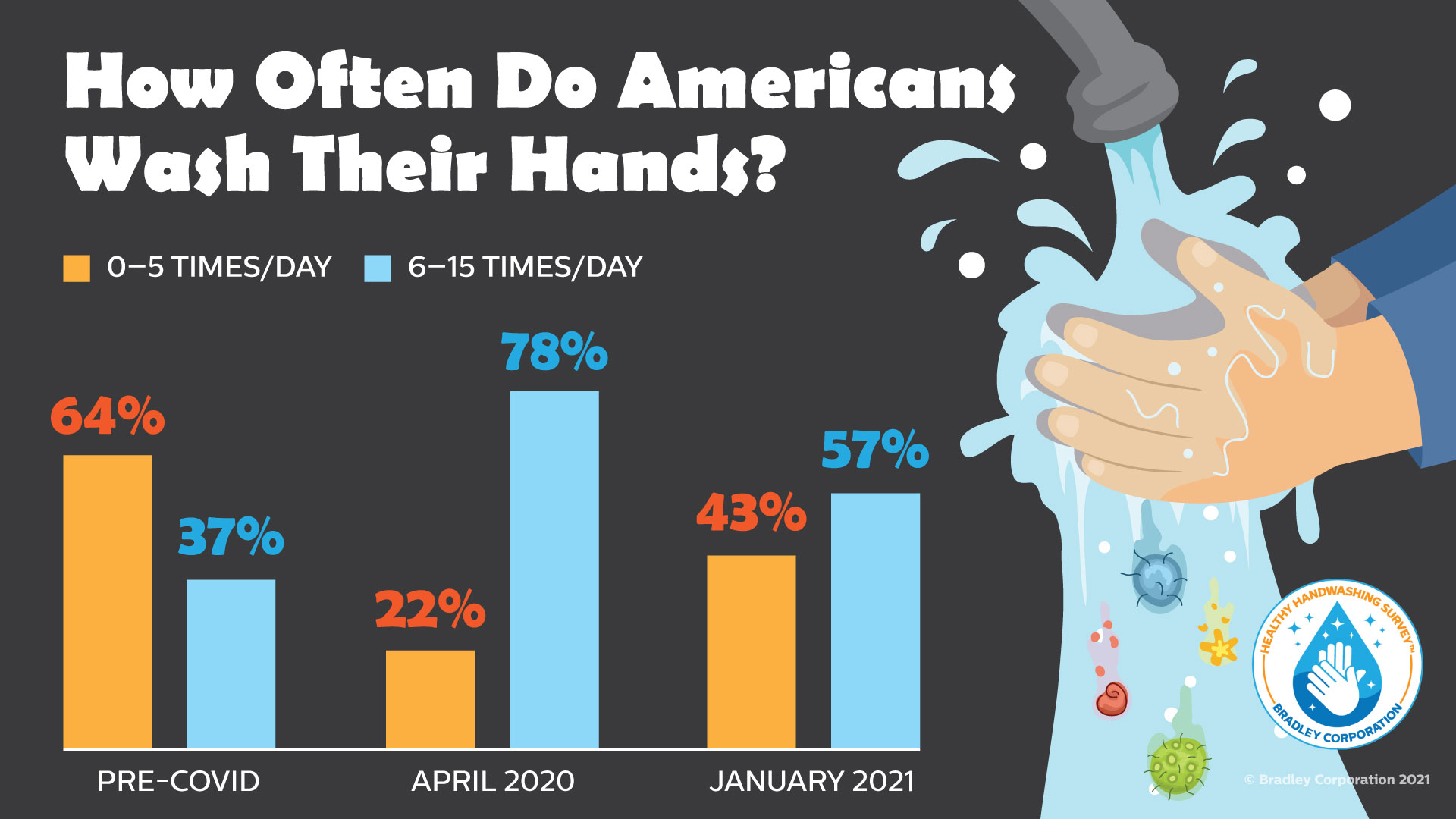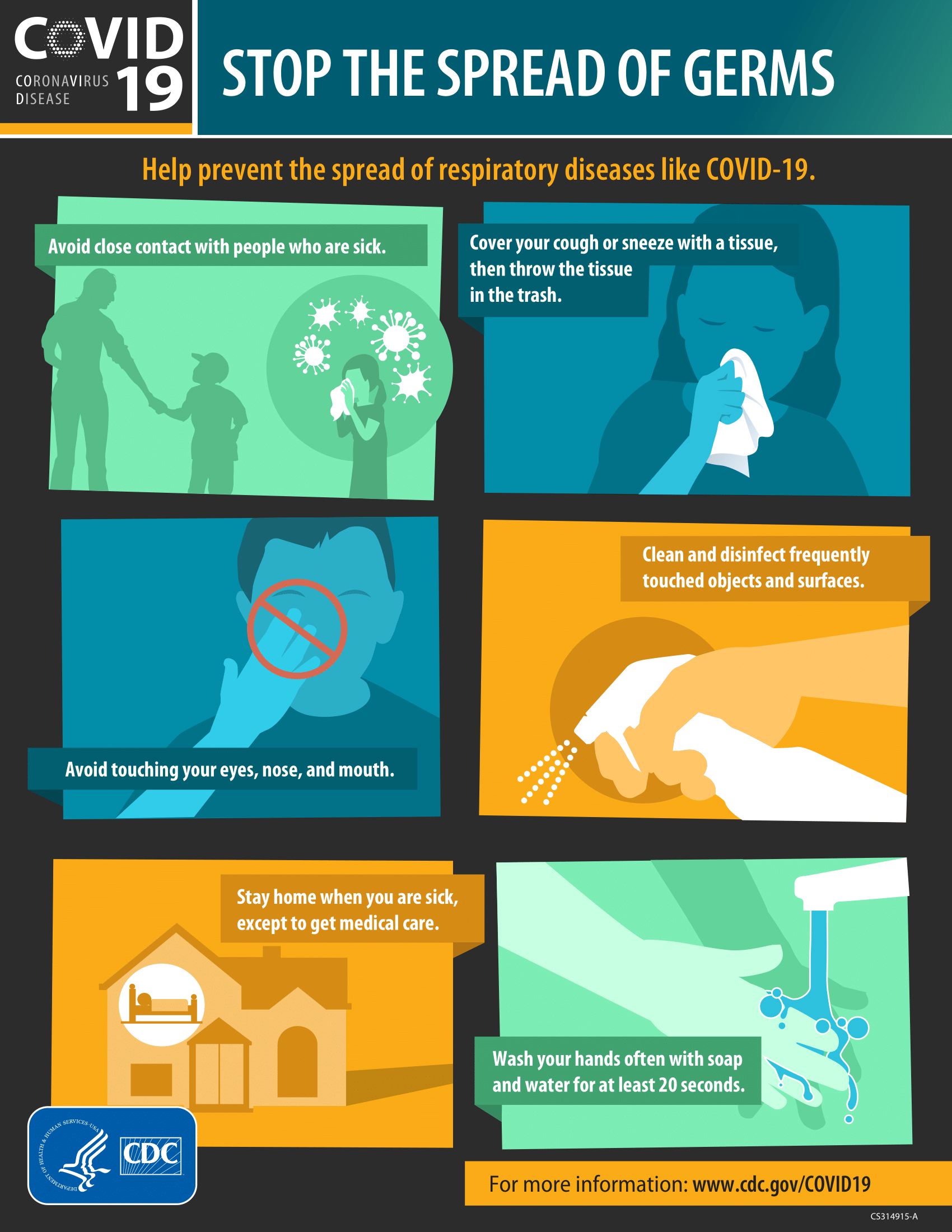Handwashing is a critical component for preventing the transmission of illness in public spaces and crucial to any effective cleaning for health plan.

American Hand Hygiene Habits Post-COVID-19
COVID-19 appears to spread primarily via droplets expelled from contagious persons after coughing or sneezing.
The first line of defense against the spread of airborne pathogens transmitted by coughing and sneezing is through stringent handwashing compliance.
According to Medical News Today;
When it comes to preventing viral infections — especially those that spread via droplets from coughs and sneezes — washing the hands is always the first-line measure.
Now, in the midst of the recent coronavirus outbreak, correctly washing the hands remains public health officials’ top advice when it comes to controlling infection rates.
In their guidelines on how to prevent infection with the novel coronavirus, the World Health Organization (WHO)Trusted Source state that people should “[w]ash [their] hands frequently with soap and water.”
During the peak of the pandemic, handwashing compliance among American adults skyrocketed from one year prior.
Ninety percent say they are washing their hands more frequently or more thoroughly or longer and 78 percent are washing their hands six or more times a day.
That’s compared to just 37 percent who washed up that often prior to the outbreak.
In addition, 77 percent are washing their hands for at least 20 seconds or longer, per CDC recommendations.
Prior to the coronavirus, the majority of Americans were not washing their hands long enough.
Fifty-seven percent estimated they washed for just five to 15 seconds.
Vast Majority of Americans Increase Hand Washing Due to Coronavirus
However, according to the most recent data collected by Bradley Corp's Healthy Handwashing Survey, handwashing compliance went down substantially over the course of 8 short months.
According to the Healthy Handwashing Survey™ conducted in January, 57% of Americans are washing their hands six or more times a day.
That’s quite a drop off from the 78% of Americans who were washing that frequently when the survey was conducted in April of 2020.
The lackadaisical approach is a stark contrast to the 81% of Americans who say they are concerned about contracting the coronavirus.
Case in point, just 53% say they wash their hands after returning from a trip outside the home.
Last April, 67% were washing after venturing out.
In addition, just 38% are currently reminding family members to wash their hands compared to 54% last year.

The significant decline in hand hygiene among US adults is likely due to a decrease in overall infection rates combined with the broad availability of several coronavirus vaccinations.
However, the behavior ignores the multitude of other deadly pathogens and pathogenic bacteria that regular handwashing helps combat, such as norovirus and influenza.
Handwashing Guidelines to Prevent the Transmission of Illness
There are several hand hygiene guidelines that proved effective during the SARS-CoV-2 pandemic and remain just as vital now in the fight against future outbreaks.
- Wash your hands for a minimum of 20 seconds with soap and water, making certain to get between the fingers, nails, and the tops and bottoms of the hand and wrist.
- Use alcohol-based hand sanitizer in the event that soap and water are not available, especially after exiting a public facility, coughing, sneezing, or coming into contact with a likely pathogen reservoir.
- Exercise hand awareness in public spaces by paying close attention to what you touch and avoid rubbing your face, nose, eyes, and mouth as much as possible without first washing your hands or applying hand sanitizer, and;
- Educate yourself and others regarding fomites--commonly touched surfaces known to harbor illness-causing germs and bacteria--and avoid direct contact with them as much as possible, but always washing your hands after touching them.

References & Resources
- Survey Provides Update On Hand Hygiene Habits
- Survey Reveals Handwashing Habits of Americans
- Hand Hygiene By The Numbers: How Many Lives Could You Save?
- Handwashing and Coronavirus Fact Sheet
Takeaway
Routinely washing your hands with soap and water is vital to preventing the transmission of germs and bacteria between people and surfaces, especially in public facilities.
During the peak of the SARS-CoV-2 outbreak, hand hygiene compliance was at an all-time high.
Now, at the tail end of the pandemic, with the widespread availability of several apparently effective vaccinations, many Americans are foregoing the increased handwashing compliance and exposing themselves and others to the transmission of other deadly diseases--a trend that is likely to continue in the wrong direction going forward.
Combatting this will require ongoing enhanced clean for health measures combined with targeted fomite disinfection facilitated by day porters throughout the day.
Outsourcing your facility's cleaning and disinfection needs to an experienced provider is a cost-effective method for onboarding these critical and in-demand services.
If you would like more information regarding the effectiveness of high-performance infection prevention and control measures, or if you would like to schedule a free, no-obligation onsite assessment of your facility's custodial needs, contact us today for a free quote!
In Bakersfield, CA, call (661) 437-3253
In Fresno, CA, call (559) 206-1059
In Valencia CA, or Santa Clarita CA, call (661) 437-3253
In Palmdale, CA or Lancaster, CA, call (661) 371-4756


You must be logged in to post a comment.